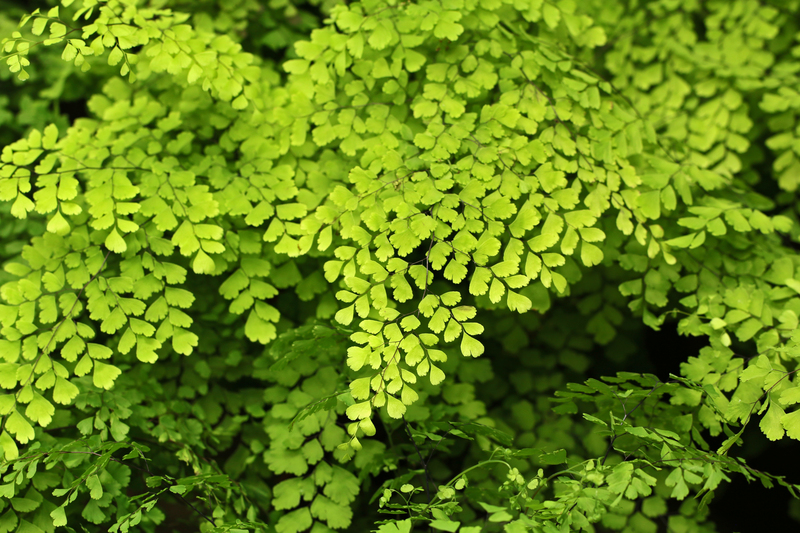Professional Tips for Artistic Hedge Trimming
Posted on 28/08/2025
Professional Tips for Artistic Hedge Trimming
Artistic hedge trimming, also known as topiary, is much more than simply maintaining your garden's hedgerows; it's a horticultural art form. Transforming overgrown greenery into stunning sculptures and beautifully manicured shapes, artistic hedge trimming breathes life, character, and intrigue into your landscape. Whether you're a green-thumbed hobbyist or seeking a statement for your commercial grounds, learning expert tips for professional hedge shaping will help you achieve spectacular results. In this comprehensive guide, you'll uncover essential techniques, tools, and upkeep secrets to master the art of hedge sculpting.

Why Artistic Hedge Trimming Matters
- Curb Appeal: Professionally styled hedges boost visual interest and property value.
- Creative Expression: Hedges become living sculptures reflecting your personality and style.
- Biodiversity: Well-maintained, healthy hedges offer vital refuge for birds, insects, and small animals.
- Functional Beauty: Sculpted hedges can serve as windbreaks, privacy screens, or natural boundaries.
With the right approach, creative hedge trimming transforms ordinary gardens into enchanting landscapes. Now, let's examine how the professionals achieve exceptional artistry and lasting beauty.
Essential Tools for Professional Hedge Trimming
Before beginning your hedge sculpting journey, assemble the right equipment. High-quality, well-maintained tools are critical for achieving clean cuts and detailed designs.
Must-Have Hedge Trimming Tools
- Hedge Shears: Manual or powered versions provide control for precise shaping and finishing cuts.
- Pruning Saws: Necessary for thick branches and rejuvenating overgrown hedges.
- Topiary Shears: Specialized scissors ideal for fine, detailed artistic work.
- Loppers: Long-handled cutters to handle larger diameter stems with ease.
- String Lines, Stakes & Templates: Assist in achieving straight lines, curves, or intricate designs.
- Protective Gear: Gloves, eye protection and sturdy footwear are essential for safe, comfortable work.
Tip: Regularly sharpen, clean, and lubricate your tools to ensure smooth operation and minimize plant stress.
Choosing the Right Hedge Species for Artistic Trimming
Success in artistic hedge cutting depends heavily on choosing the right plant material. Not all shrubs are suitable for detailed topiary or elaborate designs. Select species known for their dense foliage, small leaves, and robust growth habits.
Top Varieties for Hedge Shaping
- Boxwood (Buxus sempervirens): The classic topiary choice, favored for its fine texture and resilience.
- Yew (Taxus spp.): Slow-growing, long-lived, and tolerant of heavy pruning.
- Privet (Ligustrum): Fast-growing and versatile, ideal for both formal and informal shapes.
- Holly (Ilex): Offers glossy leaves and year-round visual interest.
- Lonicera (Honeysuckle): Great for topiary due to its dense, flexible branching.
- Hornbeam (Carpinus betulus): Strong, foliage-rich, and ideal for larger features.
Consider your climate and maintenance routine when selecting plants for creative hedge designs. Consult a local nursery or horticulturist for region-specific advice.
Design Principles for Artistic Hedge Trimming
With tools and plant materials ready, it's time to plan your artistic vision. Professional hedge sculptors rely on time-tested design principles to achieve balance, harmony, and visual impact.
Key Principles in Hedge Artistry
- Symmetry & Balance: Mirror shapes on either side of an axis or entryway for formal elegance.
- Proportion: Ensure features fit comfortably within the scale of the garden or boundary.
- Perspective: Long hedges can be tapered slightly wider at the base, narrowing towards the top, to enhance stability and create visual balance.
- Contrast: Use different textures or heights for additional interest.
- Repetition: Repeated motifs, spirals, or loops create rhythm and cohesion.
- Focal Points: Place bold sculptures or unique shapes strategically for maximum impact.
Sketch your design first, and use stakes, strings, and templates for accuracy while trimming.
Step-by-Step: Artistic Hedge Trimming Techniques
Developing a topiary masterpiece or refined border involves a blend of patience, planning, and precise technique. Follow these professional steps for spectacular hedge art results:
1. Prepare Your Canvas
- Clear the Area: Remove debris, dead wood, and weeds before starting.
- Inspect Plants: Check for pests, disease, and overall health. Address any issues to avoid spreading problems through trimming.
2. Rough Shaping
- Mark Outlines: Use string lines and stakes to define major contours, heights, or boundaries.
- Remove Excess: Begin by cutting back major overgrowth, working from the ground upwards and from the inside out.
- Use large shears or trimmers to establish rough shapes. Don't aim for perfection at this stage.
3. Refine the Form
- Switch to Finer Tools: Progress to hand shears or topiary scissors as you refine the shape.
- Make Selective Cuts: Step back regularly and view your work from different angles.
- Adjust as needed for symmetry and continuity.
4. Focus on Details
- Add Decorative Elements: Trim curves, balls, spirals, or animal forms with precision tools.
- Correct Imperfections: Don't be afraid to make small adjustments for uniformity and flow.
- Lightly shape frequently, rather than removing too much foliage at once.
5. Finishing Touches
- Clean Up: Rake and remove clippings to keep the area tidy and prevent rot.
- Hydrate and Feed: Water the hedge and apply a balanced fertilizer to aid recovery from pruning.
- Inspect final form, ensuring clean lines and even surface texture.
Advanced Artistic Hedge Trimming Ideas
For those seeking true garden showpieces, the world of hedge art offers endless creative possibilities. Here are some daring and delightful forms that showcase advanced hedge sculpting:
- Geometric Shapes: Cubes, cones, spheres, and pyramids are timeless and emphasize architectural precision.
- Spirals and Corkscrews: These intricate shapes bring dynamic motion and sophistication to walkways and entrances.
- Animal and Figurative Topiary: Create dolphins, peacocks, rabbits, or fantasy creatures for a whimsical touch.
- Arches and Gateways: Trim overhead passageways or green tunnels to frame entrances elegantly.
- Lettering and Numbers: Perfect for business signage or special occasions in public gardens or large estates.
- Seasonal Themes: Sculpt hearts for Valentine's Day, stars for winter holidays, or thematic motifs for events.
Reminder: Complex forms require patience, frequent trimming, and sometimes wire frames to guide growth and support stems.
Best Times and Frequency for Hedge Shaping
Timing dramatically influences the success of artistic hedge cutting. Strategic pruning promotes healthy regrowth and helps maintain sharp contours. Here are the professional tips:
- Spring: Ideal for most formative and severe pruning. Plants recover quickly with rising sap and longer daylight.
- Late Summer: Light trims to tidy up growth and maintain form after main bloom periods.
- Autumn/Winter: Avoid heavy pruning of evergreens, but light touch-ups on hardy species are suitable.
Most hedges benefit from 2-3 trims per growing season for intricate shapes, while formal edges may need monthly clipping during peak growth.
Maintaining Healthy, Vibrant Artistic Hedges
The key to long-lasting garden masterpieces is ongoing care. Here's how to keep your living sculptures lush and resilient:
Fertilizing and Watering
- Mulch: A 2-3 inch layer of organic mulch around the base retains moisture, suppresses weeds, and stabilizes soil temperature.
- Water: Provide consistent, deep watering, especially during dry spells.
- Fertilize: Use a slow-release balanced fertilizer once or twice a year for strong growth and vibrant color.
Dealing with Pests and Diseases
- Monitor Regularly: Look for signs of leaf spots, blight, scale insects, or aphids.
- Prune Promptly: Remove and dispose of infected or damaged branches to prevent spread.
- Choose Disease-Resistant Varieties: Especially in wetter climates or for intensively trimmed forms.
Common Mistakes to Avoid
Even the most skilled gardeners can face setbacks in artistic hedge trimming. Sidestep these pitfalls for professional-quality results:
- Over-pruning: Removing too much foliage can shock plants or expose unsightly bare wood. Always trim little and often.
- Working in Wet Conditions: Wet leaves spread diseases and can lead to ragged cuts.
- Neglecting Tool Maintenance: Dull blades tear branches, causing die-back and disease.
- Ignoring Plant Health: Unhealthy hedges won't develop dense, attractive foliage no matter how skilled your trimming.
- Forgetting Safety: Improper ladder use or lack of eye protection risks injury.

Inspirational Examples of Hedge Artistry
Need some creative motivation? Here are a few iconic examples of artistic hedge trimming from around the world:
- Levens Hall, England: Home to the world's oldest and most elaborate topiary gardens, featuring geometric shapes and mythical creatures.
- Chateau de Villandry, France: Famed for its Renaissance ornamental gardens and intricately patterned parterres.
- Green Animals Topiary Garden, USA: Sculpted animals, birds, and other whimsical forms created from carefully trained evergreen shrubs.
- Japanese Zen Gardens: Pruned hedges and cloud-pruned shrubs for tranquil, minimalist harmony.
Browse garden tours, books, or online galleries for new ideas to incorporate into your own landscape.
Conclusion: The Art and Science of Professional Hedge Shaping
Artistic hedge trimming combines horticultural knowledge with creative passion. By selecting the right species, assembling the best tools, following proven techniques, and maintaining your living artwork, you'll turn your hedges into stunning garden showpieces. Whether you choose classic forms or daring new designs, remember that the mastery of artistic hedge shaping comes with practice, patience, and a playful approach to outdoor creativity. Keep exploring, keep trimming, and let your garden flourish with living artistry!
Ready to Begin?
Take inspiration from the masters, maintain your tools and plants diligently, and don't be afraid to experiment. With these professional hedge trimming tips, your landscape can become a vibrant canvas, expressing your unique vision through the captivating art of hedge sculpting.

